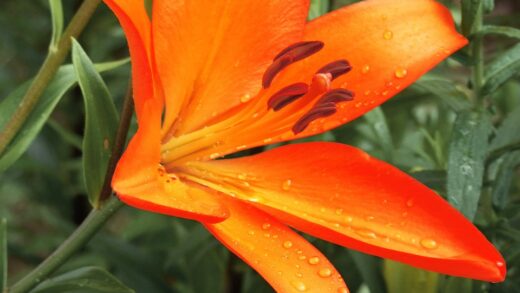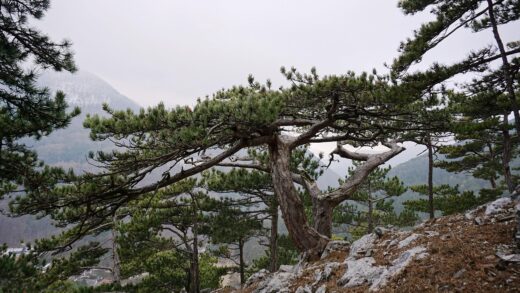The strategy for overwintering dusty miller is entirely dependent on the local climate, as this plant’s ability to survive the cold months varies significantly with geographic location. In milder regions, where winter temperatures rarely dip far below freezing, it can be treated as a short-lived perennial, gracing the garden with its silvery foliage for a second or even a third year. However, in colder climates with harsh winters, it is typically grown as an annual, completing its life cycle in a single season. Understanding your specific climate zone is the first and most critical step in determining the best approach for successfully carrying this plant through the winter.
For gardeners in USDA Hardiness Zones 8 and warmer, overwintering dusty miller outdoors is often a viable and straightforward option. These regions experience mild winters where the ground does not typically freeze solid for extended periods. In these conditions, the plant can often survive with minimal protection, especially if it is situated in a well-draining location that is sheltered from harsh winter winds. The primary threat during a mild winter is not the cold itself, but rather the combination of cold and wet soil, which can lead to fatal root and crown rot.
In areas that fall on the cusp of its hardiness, such as Zone 7, the plant’s survival can be more precarious. Success in these transitional zones often depends on microclimates within the garden and the specific cultivar being grown. Providing a thick layer of protective winter mulch can significantly increase the chances of survival. This mulch helps to insulate the root system from deep freezes and, more importantly, moderates the freeze-thaw cycles in the soil that can damage plant roots. The goal is to provide just enough protection to see it through the coldest snaps.
For those in colder climates, from Zone 6 northward, dusty miller will not reliably survive the winter outdoors. The combination of sustained freezing temperatures and frozen ground is simply too much for the plant to endure. Gardeners in these areas have two primary choices: treat the plant as an annual and simply remove it from the garden during the autumn cleanup, or attempt to bring it indoors to overwinter in a protected environment. Overwintering indoors allows you to preserve the plant and get a head start on the following season, a process that can be quite rewarding for a dedicated gardener.
Preparing plants for winter in mild climates
In regions where dusty miller is expected to survive the winter outdoors, a few preparatory steps in the autumn can significantly improve its chances. The most important task is to ensure the plant enters the winter in good health. As autumn approaches, begin to taper off any supplemental watering and cease all fertilization. This signals the plant to slow down its growth and begin the process of hardening off, which is a physiological preparation for colder temperatures. Late-season growth is tender and particularly vulnerable to frost damage.
More articles on this topic
After the first light frost of the season, but before the ground freezes, is the ideal time to apply a protective layer of mulch. The purpose of winter mulch is not to keep the ground warm, but rather to keep it consistently cold by insulating it from the fluctuating winter sun. This prevents the repeated freezing and thawing of the soil, which can heave plants out of the ground and damage their roots. Apply a two- to three-inch layer of a light, airy mulch such as shredded leaves, straw, or pine needles around the base of the plant.
When applying the mulch, be very careful to keep it from being piled directly against the crown or stems of the plant. The crown, which is the point where the stems meet the roots, is particularly susceptible to rot. Trapping moisture against the crown with a thick layer of mulch creates a perfect environment for fungal diseases to take hold during the damp winter months. Leave a small, mulch-free circle directly around the base of the plant to allow for some air circulation.
A light pruning or tidying up in late autumn can also be beneficial. Trim off any exceptionally long or leggy stems that could be damaged or broken by winter winds or snow. However, avoid a hard pruning at this time. Leaving a good portion of the foliage and stems in place provides some additional natural insulation for the plant’s crown throughout the winter. The main structural pruning is best left until the spring, after the danger of hard frost has passed and new growth begins to emerge.
Overwintering indoors in cold climates
For gardeners in cold climates who wish to save their dusty miller plants, bringing them indoors is the only reliable option. This process should begin well before the first hard frost is expected in your area. Start by selecting your healthiest and most compact plants for overwintering. Plants that are already stressed or diseased are unlikely to survive the transition and the challenges of indoor conditions. Carefully dig up the selected plants, making sure to get as much of the root ball as possible to minimize transplant shock.
More articles on this topic
Once the plant is out of the ground, gently shake off the excess garden soil and inspect the root system. Trim off any roots that appear to be dead or damaged. Pot the plant into a clean container that is just large enough to accommodate the root ball, using a fresh, high-quality, and well-draining potting mix. A pot that is too large can hold excess moisture, increasing the risk of root rot over the winter. Water the newly potted plant thoroughly to settle the soil.
Before bringing the plant inside your home, it is a crucial step to check it thoroughly for any pests. Pests like aphids or spider mites can thrive and multiply in the warm, dry environment of a heated home. It is a good idea to treat the plant preventatively with a spray of insecticidal soap or neem oil. Isolate the plant from your other houseplants for the first couple of weeks to ensure that no hidden pests emerge. This quarantine period can save you from a much larger infestation problem later.
The ideal indoor location for an overwintering dusty miller is a spot that is cool but bright. An unheated sunroom, a cool basement with a window or under grow lights, or an attached garage that stays above freezing are all excellent choices. The goal is to provide enough light for the plant to survive but to keep the temperatures cool enough (ideally between 5 and 10 degrees Celsius) to prevent it from actively growing and becoming weak and leggy. During the winter, the plant’s water needs will be minimal; water only when the soil has completely dried out.
Spring care for overwintered plants
For dusty miller that has successfully survived the winter outdoors in a mild climate, spring care is focused on rejuvenation. Wait until all danger of a hard frost has passed before taking any action. The first step is to gently pull back the winter mulch from around the crown of the plant. This allows the soil to warm up more quickly in the spring sun and encourages the plant to break dormancy. Assess the plant for any winter damage, which may appear as brown or mushy stems.
Once you see signs of new growth emerging from the base of the plant, it is time for a hard pruning. This is the most important step in revitalizing the plant for the new season. Using clean, sharp pruners, cut back all of the old, woody stems from the previous year. You can prune the plant back quite hard, down to just a few inches from the ground. While this may seem severe, it removes the winter-damaged growth and encourages the plant to produce a fresh flush of dense, new, silvery foliage from its base, resulting in a much more attractive and compact plant.
After pruning, a light application of a balanced, slow-release fertilizer can be beneficial, especially if the plant is in its second or third year. This provides the necessary nutrients to support the vigorous new growth of the upcoming season. Rake the soil surface lightly around the plant and water the area well to help activate the fertilizer and hydrate the roots. As the weather warms, the plant will respond quickly to this spring haircut and feeding, pushing out new growth.
For plants that were overwintered indoors, the process of moving them back outside must be done gradually. About a week or two before your last expected frost date, begin the process of hardening them off. Start by placing the pots in a shady, sheltered location outdoors for just a few hours a day. Over the course of the next week to ten days, gradually increase the amount of time they spend outside and slowly expose them to more direct sunlight. This acclimatization process prevents sunburn and transplant shock, ensuring a smooth transition back into the garden environment.
















